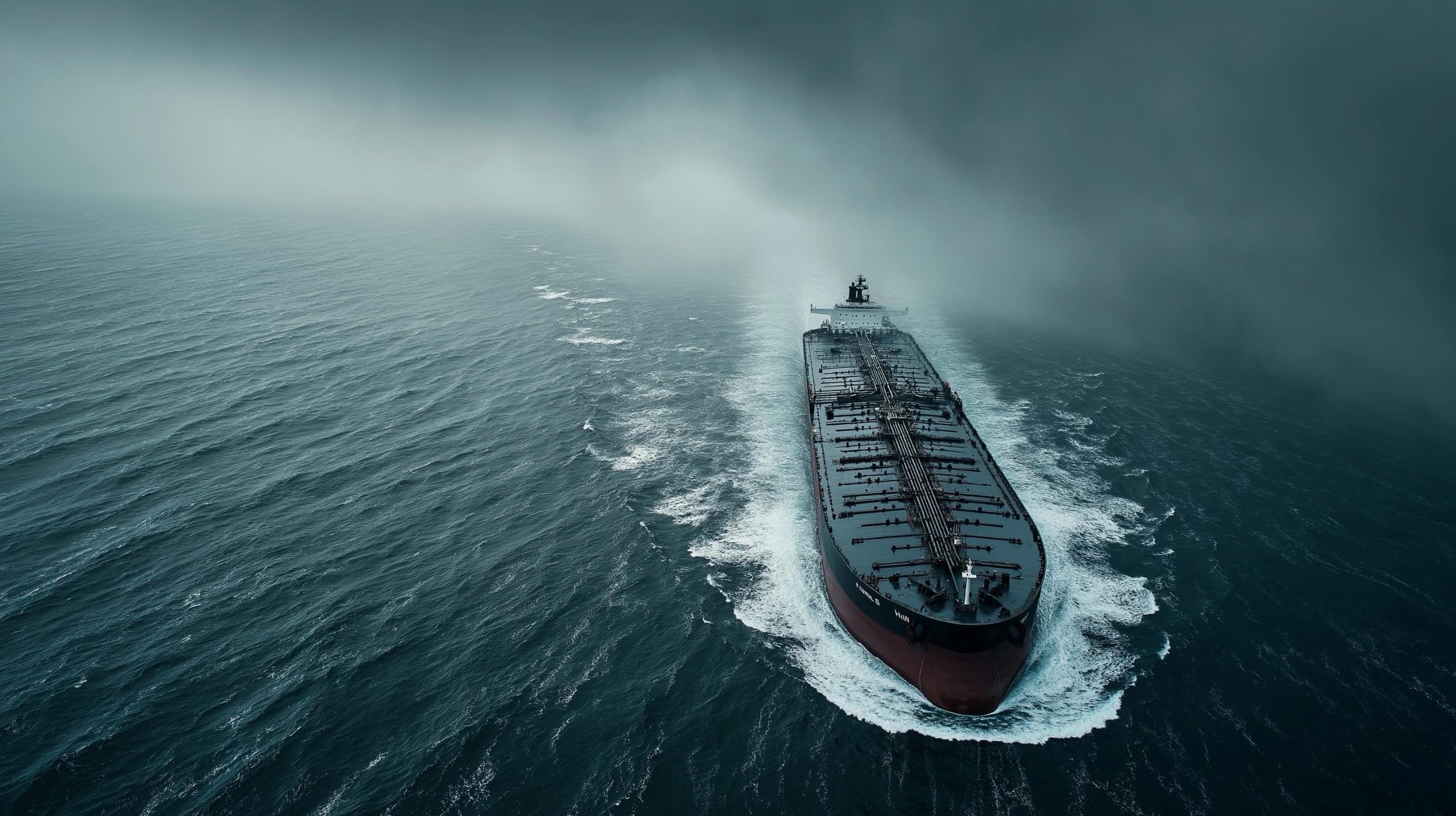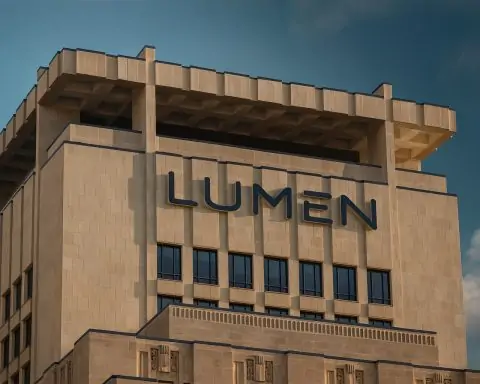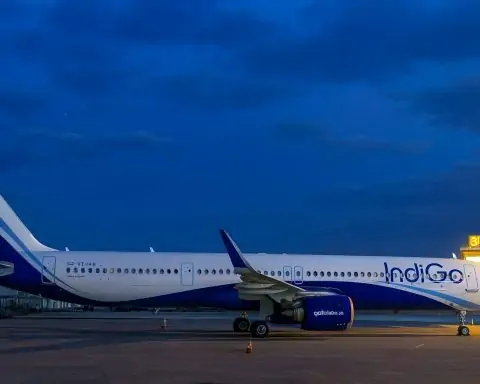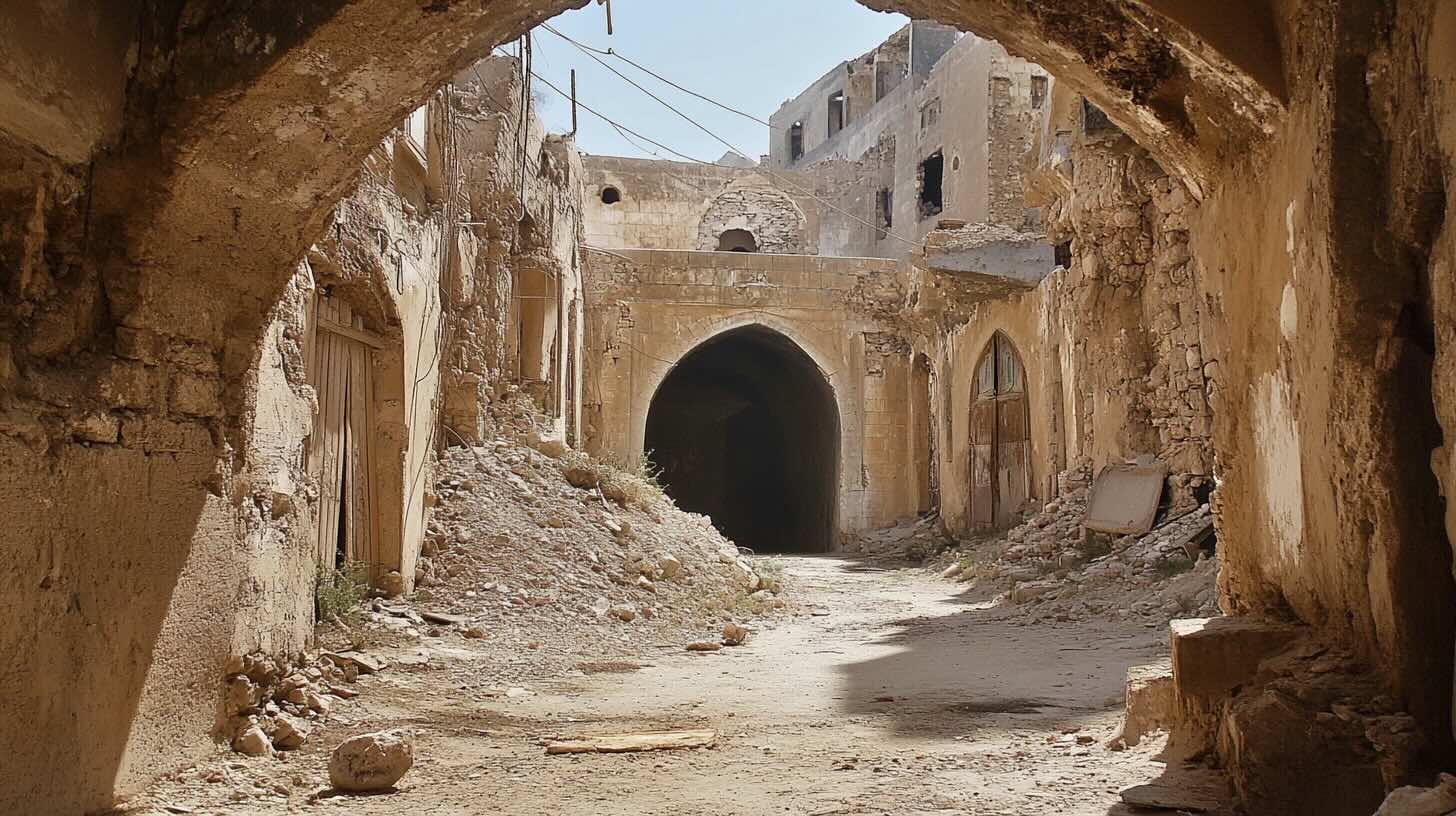- On June 22, 2025, the United States launched Operation Midnight Hammer, bombing Fordow, Natanz, and Isfahan, after which Iran’s parliament voted to close the Strait of Hormuz.
- The Strait of Hormuz carries roughly 20% of the world’s oil and gas flows, amounting to about 20 million barrels per day.
- Brent crude rose about 10% in a few days, climbing to roughly $77 per barrel.
- The strait stretches about 90 nautical miles in length, narrows to about 21 nautical miles, and the navigable channel for tanker traffic is effectively only two miles wide in each direction.
- The strait accounts for around one-third of worldwide LNG trade, including huge volumes from Qatar.
- Only Saudi Arabia and the UAE have alternative bypass pipelines (to the Red Sea and Fujairah), offering a few million barrels per day of spare capacity; most other Gulf producers rely on Hormuz.
- The Strait has a long history of conflict, including the 1980–1988 Iran–Iraq War and operations Earnest Will (1987–1988) and Praying Mantis (April 1988), and the 1988 downing of an Airbus A300 by the USS Vincennes.
- The U.S. Fifth Fleet, based in Bahrain, plus allied navies, maintains a constant patrol presence to keep Hormuz open, while Iran continues to modernize anti-ship capabilities.
- The stalemate is affecting global powers: China is pressured to rein in Tehran, Russia is watching closely, and Gulf states fear spillover while seeking de-escalation.
- International organizations are involved: the IEA can coordinate strategic stock releases, and the UN Security Council has warned that blocking an international waterway would violate international law.
Latest Developments: June 2025 Crisis
In the past 48 hours, the Strait of Hormuz has become the flashpoint of a sudden international crisis. Iran’s parliament voted to close the Strait of Hormuz in retaliation for U.S. airstrikes on Iranian nuclear facilities [1]. This move came after a dramatic escalation: on June 22, 2025, the United States launched “Operation Midnight Hammer,” bombing key Iranian nuclear sites (Fordow, Natanz, Isfahan) in coordination with Israel [2]. Tehran’s response was swift – lawmakers backed shutting the strait, a vital oil artery that carries roughly 20% of the world’s oil and gas flows [3]. Global markets recoiled at the news, with Brent crude prices spiking about 10% (to ~$77 per barrel) within days [4]. The U.S. has warned Iran that attempting to choke off Hormuz would be “economic suicide” and vowed swift action to keep it open [5]. Washington even urged China, a major buyer of Gulf oil, to press Tehran to stand down from closing the strait [6]. As military tensions flare and oil prices jump, all eyes are on the Strait of Hormuz – the world’s most important energy chokepoint – and the potential fallout of this high-stakes showdown.
Geographic Description and Location
Map of the Strait of Hormuz, showing Iran (north) and Oman/UAE (south), with narrow shipping lanes in each direction. The Strait of Hormuz is a narrow maritime passage linking the Persian Gulf to the Gulf of Oman and Arabian Sea. It is flanked by Iran to the north and the Arabian Peninsula (the Musandam exclave of Oman and the United Arab Emirates) to the south [7]. The strait stretches about 90 nautical miles (167 km) in length, but at its narrowest point it is only around 21 nautical miles (39 km) wide [8]. In practical terms, the navigable channel for ships is even tighter – effectively only two miles wide in each direction for tanker traffic [9]. Within this confined corridor lie a few small islands (notably Iran’s Qeshm and Hormuz islands), and the waters are divided by the maritime borders of Iran and Oman. The extreme narrowness and geography make Hormuz a natural bottleneck, one highly vulnerable to blockades or disruptions. Every vessel entering or exiting the Persian Gulf must pass through this pinch point, underscoring its outsized strategic importance despite its small size.
Historical Background
The Strait of Hormuz has been a crossroads of commerce and conflict for centuries. Long before oil was discovered in the region, Hormuz was a thriving trade route – a gateway through which silk, spices, and pearls moved from Asia to the world. Its strategic location made it coveted by empires: the Portuguese seized the island of Hormuz in the early 1500s to control Gulf trade, until an Anglo-Persian force expelled them in 1622. Over the ensuing centuries, the strait remained critical for trade; even Babur (founder of the Mughal Empire) noted that goods like almonds from Central Asia had to be carried all the way to Hormuz to reach global markets [10]. In the modern era, colonial powers and regional kingdoms alike understood its value. The British Empire, which dominated the Persian Gulf in the 19th and early 20th centuries, policed these waters to safeguard trade routes to India. After World War II and the withdrawal of British forces by 1971, newly independent Gulf states and Iran inherited the task of managing the strait. Hormuz’s strategic relevance only grew after the mid-20th century once the Gulf’s vast oil reserves came into play. From the 1970s onward – including during the Iranian Revolution and Iran-Iraq War – the strait’s status as a critical oil lifeline has repeatedly put it at the center of international power struggles.
Strategic Importance in Global Oil Trade
Hormuz is often dubbed the “world’s most important oil chokepoint,” and for good reason. At present, roughly one-fifth of the planet’s oil supply (about 20 million barrels per day) flows through the Strait of Hormuz [11]. In the mid-2010s, about 20% of global oil consumption and nearly a third of all seaborne oil shipments passed through this narrow channel [12] [13]. Every major Persian Gulf oil exporter – Saudi Arabia, Iraq, the UAE, Kuwait, Qatar, and Iran itself – ships crude out via Hormuz, making it an irreplaceable conduit for petroleum exports [14]. The strait is equally vital for natural gas: it handles around one-third of worldwide liquefied natural gas (LNG) trade, including massive volumes from Qatar [15]. In short, a huge portion of Asia’s and the world’s energy supply rides on tankers transiting this choke point.
Because so much oil flows through Hormuz, any disruption can jolt global markets and economies. Alternative routes are limited. Only Saudi Arabia and the UAE have pipelines that bypass the strait (to the Red Sea and to Fujairah, respectively), and those offer spare capacity of just a few million barrels per day – a fraction of total Gulf exports [16]. Other producers like Kuwait, Iraq, and Qatar have no feasible export route except through Hormuz [17]. This means the strait is a single, concentrated point of vulnerability for global energy supply. Oil-importing nations are acutely aware that a closure of Hormuz, even temporarily, could send fuel prices soaring and spark supply shortages worldwide. Asian economies in particular are dependent: nearly 80% of the crude passing through Hormuz heads to Asian markets, with China, India, Japan, and South Korea together accounting for about two-thirds of the flow [18]. Even nations far from the Gulf feel the impact – for example, European officials note that any prolonged Hormuz disruption would seriously hurt global oil supply and thus their economies as well [19]. In essence, the Strait of Hormuz is the jugular vein of global oil trade – a narrow conduit carrying the lifeblood of modern economies.
Role in International Shipping and Energy Security
Beyond oil statistics, the Strait of Hormuz represents a central node of international shipping and energy security. The strait’s narrow shipping lanes and shallow depth in parts force large vessels to navigate carefully, making them potential targets and raising insurance costs whenever tensions spike. Security of passage through Hormuz is therefore a constant international concern. Freedom of navigation in these waters is not just a regional issue but a global priority, defended by maritime law and, when necessary, by naval power. Over the years, there have been numerous incidents highlighting how fragile safe passage can be. In mid-2019, for example, a series of mysterious attacks on oil tankers near the strait (which Washington blamed on Tehran) and the IRGC’s seizure of a British-flagged tanker (Stena Impero) sent shockwaves through shipping markets [20] [21]. Insurance premiums for vessels in the Gulf shot up, and crews grew anxious as armed escorts were arranged. In response, the U.S. organized a multinational maritime security coalition in 2019, alongside the UK and others, to protect commercial ships transiting the Gulf [22]. This reflects a pattern: whenever conflict looms or Iran-West tensions rise, the international community scrambles to secure Hormuz and reassure markets.
Energy security planners worldwide treat a potential Hormuz closure as a nightmare scenario. The International Energy Agency (IEA) has warned that any sustained blockage of the strait would lead to a severe global oil supply shock [23]. Countries maintain strategic oil reserves partly as a cushion against such an event. For example, nations like the United States, China, Japan, and India have millions of barrels stored in strategic reserves that could be tapped to dampen the impact of a short-term disruption. However, those reserves are finite, and a prolonged stoppage in Hormuz could outstrip their ability to compensate. This is why ensuring the strait’s security has become synonymous with maintaining global energy stability. From an international shipping perspective, Hormuz is one of several critical chokepoints (alongside the likes of the Suez Canal and Malacca Strait), but it is by far the most significant for oil and gas. The phrase “keeping Hormuz open” is thus a core objective in the energy security strategies of major powers. In practice, that has meant a near-constant presence of foreign naval patrols, convoy escorts during crises, and diplomatic efforts to de-escalate threats in the region – all aimed at guaranteeing that tankers and cargo ships can transit this narrow waterway without fear.
Military Presence and History of Conflict
The Strait of Hormuz has frequently been a theater of military brinkmanship, and a substantial armed presence shadows these waters at all times. Iran’s military and the Islamic Revolutionary Guard Corps (IRGC) patrol the strait aggressively from the north coast, while the United States Navy’s Fifth Fleet, based in Bahrain, along with allied navies, patrol from the south to ensure open access. This has set the stage for numerous tense encounters and occasional open conflict over the years. During the 1980–1988 Iran–Iraq War, the strait was the site of the infamous “Tanker War.” Both Iran and Iraq sought to cripple each other’s economies by attacking oil shipments – Iraq fired on Iranian ships, and Iran retaliated against tankers linked to Iraq or its Gulf allies [24]. In 1987-1988, after repeated Iranian mines and boat attacks on tankers, the U.S. intervened with Operation Earnest Will, escorting re-flagged Kuwaiti tankers through Hormuz with warships [25]. This period saw direct skirmishes: in April 1988 the U.S. Navy clashed with Iranian forces (Operation Praying Mantis), destroying several IRGC boats and platforms, and tragically that July the U.S. cruiser Vincennes mistook an Airbus airliner for a hostile target and shot it down over Hormuz, killing 290 civilians [26]. The late 1980s firmly established the U.S. Navy as a guarantor of shipping in the strait, willing to use force to keep it open.
Since then, conflicts and close calls have continued. Iranian forces have repeatedly threatened or harassed naval vessels in the area – for instance, a series of near-confrontations in late 2007 saw IRGC speedboats aggressively approach U.S. warships in the strait (though no shots were fired) [27]. Iran has also used Hormuz to apply pressure on rivals, seizing commercial ships at times. In April 2023, IRGC troops boarded and seized the Advantage Sweet, a Marshall Islands-flagged oil tanker chartered by Chevron, as it passed through nearby waters; the vessel and crew were held for over a year [28]. Each such incident sparks international condemnations and often a military response. Western navies have bolstered their presence whenever Iran acts up – deploying aircraft carrier strike groups, surveillance drones, and additional patrol ships to deter further seizures. Notably, Oman (which co-owns territorial waters in the strait) and other Gulf states also maintain a military presence, but their forces are small compared to Iran’s and the U.S.-led coalitions. Oman typically plays a quieter role, coordinating safe navigation and often mediating behind the scenes during crises.
Crucially, outright closure of the Strait of Hormuz has never been successfully executed, despite Iran’s periodic threats. Military analysts note that Iran could attempt to block the strait – for example, by laying naval mines or using anti-ship missiles and swarms of attack boats [29]. Indeed, Tehran has war-gamed such scenarios in exercises. However, any large-scale move to choke off Hormuz would almost certainly trigger a powerful backlash from the United States and others. The consensus among experts is that Iran might disrupt traffic for a short time but would be unable to withstand a concerted military response to reopen the waterway [30]. The U.S. Fifth Fleet and partner navies are on constant alert here, and they have honed plans over decades to counter mine warfare and escort ships if needed. This enduring standoff – Iranian forces probing and Western warships countering – defines the military dynamic of Hormuz. As of 2025, the strait remains heavily militarized, with the U.S. and its allies conducting regular freedom-of-navigation operations and Iran continuing to modernize its anti-ship capabilities as a deterrent. Hormuz is essentially a chessboard where naval power and geopolitical signalling play out daily, underlining its role not just in commerce but also in military strategy.
Current Geopolitical Situation
Today’s geopolitical environment around the Strait of Hormuz is extraordinarily tense and complex. The latest crisis of June 2025 has brought regional and global rivalries to a boiling point. After the collapse of nuclear talks and the outbreak of direct hostilities between Iran and Israel (with U.S. involvement), the strait is once again a fulcrum of leverage. Tehran’s threatened closure of Hormuz is a stark reminder that Iran sees this waterway as a strategic ace-up-its-sleeve – a means to pressure the international community when its back is against the wall. Iranian officials have long hinted at this strategy: if Iran’s security is threatened or its oil exports are cut off, they assert that no other nation’s oil will safely leave the Persian Gulf. Now, faced with airstrikes on its soil, Iran appears willing to test that threat. However, Iran also finds itself increasingly isolated. Gulf Arab neighbors (like Saudi Arabia and the UAE) are alarmed by the prospect of conflict spilling into their shipping routes, even though some quietly applaud strikes on Iran’s nuclear program. These Arab states, while having sharpened their own military capabilities, rely heavily on the American security umbrella to keep Hormuz open. They are urgently consulting with Washington and European partners about bolstering defenses around the Gulf.
Meanwhile, global powers are jockeying diplomatically. China, as one of Iran’s few major partners and the top importer of Gulf oil, has been thrust into a key role – Beijing is under pressure to rein in Tehran’s rash moves (hence U.S. Secretary of State Rubio’s direct appeal to China to intervene) [31]. Russia, another Iran ally, is likewise watching closely; Moscow benefits from high oil prices but does not want its Iranian partner drawn into a war that could invite Western military buildup in the region. The United States has sent clear signals that it will use force to prevent any closure of the strait, positioning additional naval assets in the vicinity and working through backchannels (via Oman, Qatar and others) to discourage Iran from crossing that line. Europe, for its part, is scrambling to manage the energy fallout – EU officials have discussed releasing strategic oil stocks and even reconsidering sanctions policies amid this crisis, as leaders like Hungary’s PM Orbán urge focusing on energy stability over confrontation. The United Nations Security Council held an emergency session to address the Hormuz situation, with calls for restraint and warnings that blocking an international waterway violates global law. Still, diplomatic statements have so far done little to cool the temperature on the ground.
In short, the current geopolitical situation is a high-stakes standoff. Iran is trying to project strength and deterrence in the face of military attacks, using the Strait of Hormuz as a pressure point. The U.S. and its allies are determined not to let that pressure derail the global economy or set a precedent of blackmail. Countries like Oman (which historically maintains friendly ties with both Iran and the West) are likely working feverishly behind closed doors to broker de-escalation. The coming days will be critical – a test of diplomacy versus brinkmanship. The strategic calculus for Iran is sobering: any attempt to militarily follow through on closing Hormuz could invite overwhelming retaliation, yet doing nothing might be seen domestically as weakness. For the international community, the challenge is equally daunting: how to convince Iran to step back without escalating the conflict further. Thus, Hormuz sits at the intersection of multiple geopolitical fault lines – Iran’s clash with the West, great-power competition, and global energy security – making the resolution of this crisis pivotal for international stability.
Key Stakeholders in the Strait of Hormuz
Several countries and organizations have critical stakes in the Strait of Hormuz, each with different interests:
- Iran: Littoral state controlling the north shore. Iran views the strait as part of its strategic backyard and a source of leverage against more powerful adversaries. It has frequently threatened to close Hormuz in retaliation for sanctions or attacks [32]. Iran’s military strategy factors in asymmetrical tactics (mines, missiles, swarm boats) to harass or halt shipping. At the same time, Iran relies on the strait for its own oil exports, so an actual closure would also hurt itself. The Islamic Republic sees managing Hormuz as a matter of national pride and security, often framing U.S. naval presence as a violation of its sovereignty.
- Oman: Littoral state controlling the south (Musandam Peninsula) shore. Oman’s territorial waters include part of the strait, and it has historically been the peaceful gatekeeper of Hormuz. The Omani government maintains cordial relations with Iran and the West, often acting as a mediator. Oman ensures that international shipping lanes in its waters remain safe, and Omani pilots sometimes assist foreign vessels. Muscat’s primary interest is stability and open commerce; it quietly hosts logistical support for U.S. and allied navies but also communicates with Tehran to reduce misunderstandings.
- Arab Gulf States (Saudi Arabia, UAE, Qatar, Kuwait, Bahrain, Iraq): Major oil/gas exporters reliant on Hormuz. These countries’ economic lifelines depend on an open strait. Saudi Arabia and the UAE have built pipelines to bypass Hormuz (to the Red Sea and Fujairah), but still ship the bulk of their oil through it [33]. They invest heavily in military defenses and cooperate with U.S./UK navies to secure the Gulf. Qatar relies on Hormuz for LNG exports. Kuwait and Iraq have no alternative routes for most of their oil. Collectively, the Gulf states view any threat to Hormuz as an existential economic danger. Politically, many of them oppose Iran’s regional influence, so they align with U.S. efforts to deter Iran’s actions at the strait, even as they seek to avoid being dragged into open conflict.
- United States and Western Allies: Security guarantors of the shipping lanes. The U.S. has a permanent naval presence in and around Hormuz (the Fifth Fleet) precisely to ensure freedom of navigation [34]. It leads coalitions to escort ships when threats arise (as seen in 2019 and now in 2025). American policy-makers consider Hormuz’s openness a “red line.” The United Kingdom, which has a naval facility in Bahrain, routinely contributes warships to Gulf patrols, especially after incidents like Iran’s tanker seizures. France and other NATO allies have also periodically deployed assets to police the strait. These Western allies share interests in stable oil markets and upholding international law (UNCLOS transit rights), making them key stakeholders in any Hormuz contingency.
- Asian Importers (China, India, Japan, South Korea): Major energy consumers dependent on Gulf oil. Asian economies are the largest buyers of oil that passes through Hormuz [35]. China imports over 5 million barrels per day via the strait and has become diplomatically involved, balancing its partnership with Iran against its need for stable energy. Beijing has even sent naval vessels to the region for anti-piracy patrols and could play a role in security cooperation. India, similarly, receives about 2 million barrels per day through Hormuz [36] and has a strong interest in keeping it open – the Indian Navy has conducted exercises in the Arabian Sea and joined information-sharing alliances to enhance maritime security. Japan and South Korea depend on Middle East oil and back U.S.-led security initiatives diplomatically. These countries, while not wanting conflict, have quietly coordinated contingency plans (including strategic petroleum reserves and alternate sourcing) in case of a Hormuz disruption. Their voice in international forums is increasingly important in urging de-escalation and peaceful resolution, given they would bear the brunt of an oil supply shock.
- International Organizations: Stakeholders in global economic stability and legal order. The International Energy Agency (IEA) monitors the Hormuz situation closely – it can coordinate strategic stock releases among consuming nations if supply is cut, and it consistently warns of the global market impact of strait disruptions [37]. The United Nations plays a diplomatic role; the UN Security Council has in the past discussed Hormuz tensions, affirming that blocking the strait would violate international law and could warrant collective action. Meanwhile, the International Maritime Organization (IMO) sets navigation safety guidelines for chokepoints like Hormuz. Although the IMO has no enforcement power in a military showdown, it works to improve communication and protocols to prevent incidents. OPEC (and OPEC+ which includes Russia) also has a stake – member states rely on Hormuz for exports, and OPEC watches the situation to possibly adjust output or reassure markets. In sum, a broad spectrum of international bodies is tuned into Hormuz, as any major disturbance there would have worldwide repercussions.
Sources: Recent news reports and analyses have been used to compile this comprehensive overview, including breaking updates on the June 2025 crisis and authoritative statistics on oil transit. Key references include Reuters, POLITICO, Al Jazeera, the Times of India, Britannica, and others for factual details and figures [38] [39] [40] [41]. These sources provide insight into both current events and the historical and strategic context of the Strait of Hormuz.
References
1. www.politico.eu, 2. www.politico.eu, 3. www.reuters.com, 4. www.reuters.com, 5. www.reuters.com, 6. www.reuters.com, 7. en.wikipedia.org, 8. en.wikipedia.org, 9. timesofindia.indiatimes.com, 10. en.wikipedia.org, 11. timesofindia.indiatimes.com, 12. www.britannica.com, 13. www.politico.eu, 14. timesofindia.indiatimes.com, 15. www.britannica.com, 16. www.reuters.com, 17. www.reuters.com, 18. timesofindia.indiatimes.com, 19. timesofindia.indiatimes.com, 20. www.aljazeera.com, 21. www.aljazeera.com, 22. www.aljazeera.com, 23. timesofindia.indiatimes.com, 24. www.reuters.com, 25. www.reuters.com, 26. www.reuters.com, 27. www.reuters.com, 28. www.reuters.com, 29. www.reuters.com, 30. www.reuters.com, 31. www.reuters.com, 32. www.politico.eu, 33. www.reuters.com, 34. www.aljazeera.com, 35. timesofindia.indiatimes.com, 36. timesofindia.indiatimes.com, 37. timesofindia.indiatimes.com, 38. www.politico.eu, 39. www.reuters.com, 40. www.reuters.com, 41. timesofindia.indiatimes.com








![BIO-key (BKYI) spikes on major Middle East defense biometric deployment — stock reacts as company expands EMEA footprint [Nov. 7, 2025] BIO-key (BKYI) spikes on major Middle East defense biometric deployment — stock reacts as company expands EMEA footprint [Nov. 7, 2025]](https://ts2.tech/wp-content/uploads/2025/11/BIO-key-International-480x384.jpg)

